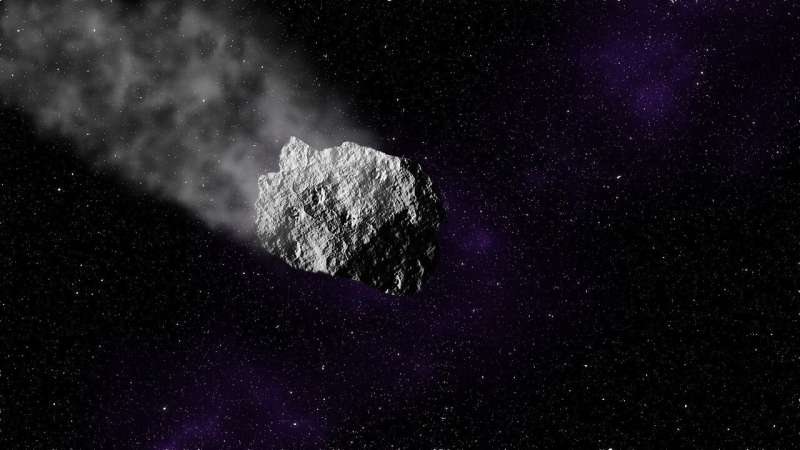.. Our study focuses on the last two possibilities: what happens to the possible stones on the surface and the asteroid's orbit."
How to experiment with an asteroid
Research in the space sector presents the challenge that, in most cases, it is impossible to directly experiment with space materials. For this reason, numerous investigations are approached from the field of mathematics and physics, taking the greatest possible number of variables into account.
The research team responsible for this study has analyzed both the physical aspects of the asteroid—among them, its shape and the characteristics of its gravitational field—as well as the factors that can influence its trajectory and its slope angle, such as the radiation pressure or disturbance inflicted due to its proximity to Earth.
To carry out this piece of research, the team has carried out a set of numerical simulations—two simulation environments with three experimental cases each—using a disk of 15,000 particles of different sizes in the close environment of Apophis as a sample. The objective has been to try to predict how the particles orbiting the asteroid will react to different situations and how these assumptions may influence the behavior of Apophis.
The first set of simulations was designed considering only the gravitational disturbance of Apophis in 24-hour periods over 30 years. The second set of simulations included disturbance caused by solar radiation pressure. Three cases were proposed in both sets, in which the asteroid had different densities. "We evaluated a 340-meter polyhedron with a uniform density in three different cases. In each case, the starting point was a different particle density, from highest to lowest," says Gabriel Borderes-Motta.
From these simulations, it was concluded that the asteroid's slope angle was greater at low densities (4°) than at high densities (2°); in addition, the lower the particle density and the higher the solar radiation pressure, the fewer particles remained intact. In other words, in a scenario where Apophis has a low density, approximately 90% of the loose stones would be removed from its surface during the approach to Earth. In addition, the results have shown that Apophis's approach could slightly affect the tides and cause some landslides on the asteroid's surface.
The team hopes that the asteroid's approach to Earth in 2029 will be an opportunity to improve the 3D model used to run space simulations, as well as to allow them to more accurately investigate and predict the effects on Apophis's surface. All of this would mean an increase in knowledge about asteroids, which would allow us to be better prepared in the event that new celestial bodies pass close to Earth.
The research was published in Monthly Notices of the Royal Astronomical Society.
Explore further



